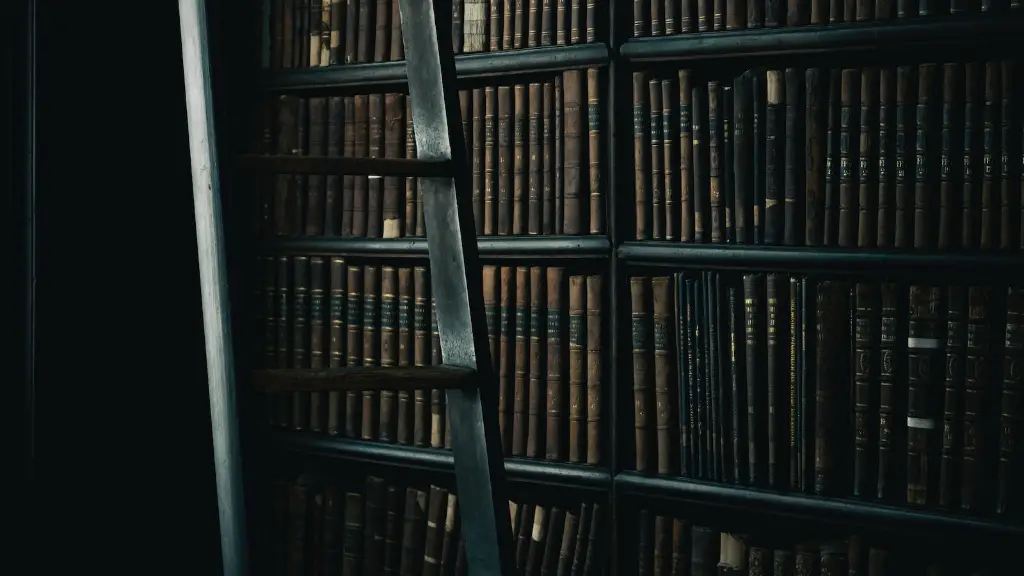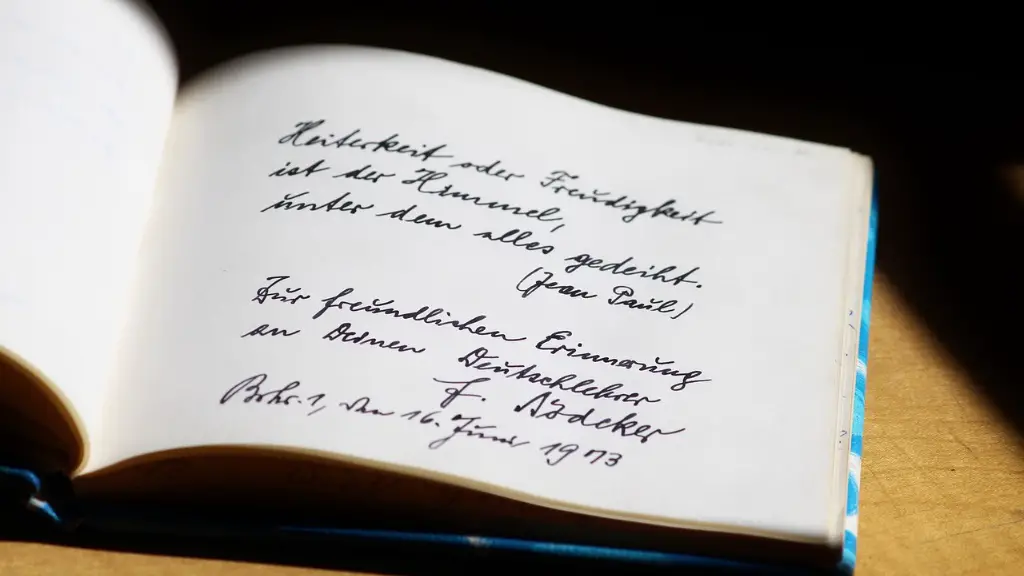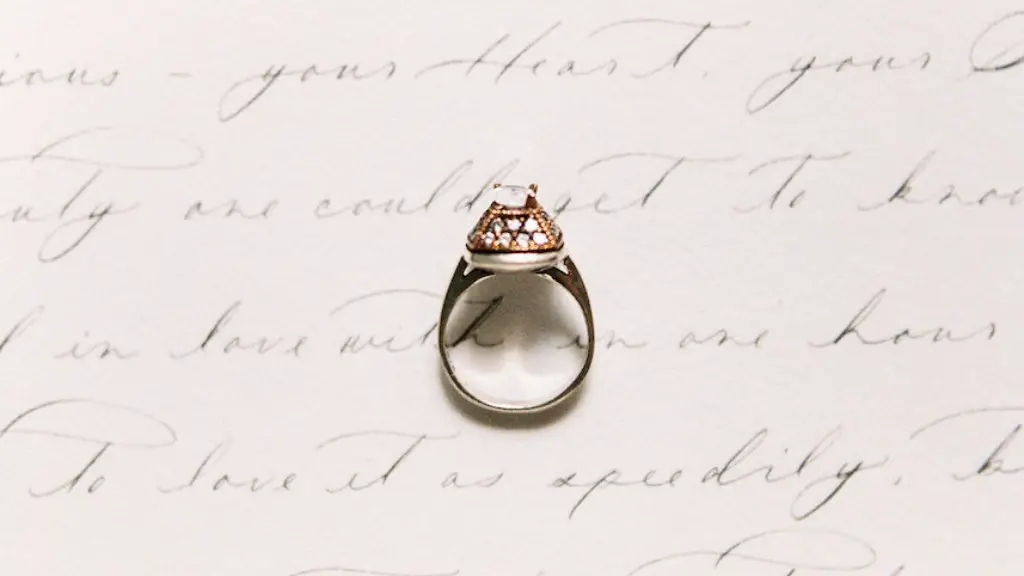The poem The Lamb by William Blake is a short poem which is about a lamb and its creator. In the poem, the lamb is seen as a symbol of innocence and purity, and its creator is seen as a loving and protective figure. The poem reflects the Romantic belief that nature is good and that humans are innately good.
The poem “The Lamb” by William Blake can be seen as an example of Romanticism in poetry. This is because the poem is about the singer’s happy and innocent view of nature, which is a common theme in Romanticism.
How does William Blake relate to romanticism?
William Blake was one of the earliest Romantic Period writers. Blake believed in spiritual and political freedom and often wrote about these themes in his works. Although some of his poetry was published before the official start to the era, Blake can be seen as one of the founders of this movement.
The Tyger is a poem that is full of symbolism and hidden meaning. The poem is about a tiger that is feared by many, but also seen as a beautiful and majestic creature. The poem contains elements of spiritual vision, imagination, the supernatural, and emotion. These elements are all present in many other works of The Romantic Era. For example, in the first stanza of Blake’s poem, he writes, “What immortal hand or eye, Could frame thy fearful symmetry?” This line is full of symbolism and imagination. It is also a question that can be interpreted in many ways.
What does lamb symbolize in literature
Lambs are traditionally seen as innocent creatures, and this is reflected in the Christian Gospels. Jesus Christ is compared to a lamb because he was willing to be sacrificed for the sake of humanity. Furthermore, lambs are also associated with the concept of childhood, which is a recurring theme in the Songs of Innocence.
William Blake is considered a Romantic poet because his poems exemplify the characteristics of Romantic poetry. They were lyrical, or song-like, due to his use of imagery and conscious word choice. Many of his poems focus on nature and emotion, which are two characteristics of Romantic poetry.
What are the characteristics of romanticism?
The literature of romanticism is characterized by subjectivity and an emphasis on individualism. This means that the individual experience is more important than anything else. The literature of this period is also marked by spontaneity, freedom from rules, and a focus on the solitary life rather than life in society. The beliefs that imagination is superior to reason and devotion to beauty are also important aspects of this literature. Finally, the love of and worship of nature is another key characteristic of romanticism.
Blake is considered by many to be the father of Romantic poetry. Born during the Enlightenment Era in 1757, Blake famously strove to differentiate himself from the formal and conforming styles of his contemporaries. His work is characterized by its focus on emotion and imagination, as well as its rejection of traditional values and conventions. Blake’s poetry was highly influential in shaping the Romantic movement, and his work continues to be popular and highly respected today.
Is The Lamb by William Blake a romantic poem?
“The Lamb” by William Blake is a Romantic lyric poem published in his illustrated collection Songs of Innocence. The poem is written in the voice of a child who addresses a lamb and asks it a series of questions. The poem is simplest and most representative of Blake’s Songs of Innocence.
The Lamb is a beautiful and romantic poem that reflects Blake’s spiritual and idealistic view of the world. The poem celebrates childhood innocence and purity, which are two of the most important qualities of Romanticism.
What are the characteristics of romanticism in the essays of Charles Lamb
Charles Lamb’s essays are characterized by a certain romanticism. This is evident in the way he uses his imagination to color the facts and in the way he opens up about his own life to his readers. According to Arthur Compton-Rickett, Lamb’s humor and pathos are really inseparable from one another, which only adds to the overall romantic feeling of his writing.
The poem “The Lamb” by William Blake is a poem that uses the lamb as a symbol for Christ, innocence, and the nature of God’s creation. The poem is written in the form of a conversation between the poet and the lamb. In the first stanza, the poet asks the lamb if it knows who was responsible for creating it. The lamb replies that it was created by God. In the second stanza, the poet asks the lamb if it knows who created the sun, the moon, and the stars. The lamb replies that it was also created by God.
What is the main idea of the poem the lamb?
The poem “The Lamb” by William Blake is a religious poem that marvels at the wonders of God’s creation. In the poem, a child addresses a lamb, wondering how it came to exist, before affirming that all existence comes from God. In the humble, gentle figure of the lamb, the speaker sees the beautiful evidence of God’s work.
The lamb and the tiger are two creatures that symbolize different aspects of life and creation. The lamb represents innocence and simplicity, while the tiger signifies strength and wildness. Both animals represent different aspects of life, and they each have their own unique meaning.
What are the characteristics of romanticism poetry
The Romantic era was a time of great change and creativity. Emotion and passion were highly valued, and the critique of progress was a central feature of the era. A return to the past was also common, as was an awe of nature. The idealization of women was another key feature, as was the celebration of the individual.
The Romantic era was a time of great change and upheaval. The artists of the time sought to celebrate the individual imagination and intuition, in the face of what they saw as the increased emphasis on reason and order. They believed that sense and emotions were just as important as reason in understanding and experiencing the world. This period saw the rise of many great artists and writers, who have had a lasting impact on the world.
What was the central theme of the Romantics poetry?
This theme is often explored in Romantic poetry through the use of metaphor and personification. For example, the Romantic poet William Blake often used the metaphor of the “nightingale” to represent the human soul, and the poet Percy Bysshe Shelley used the metaphor of the “wind” to represent the emotions. Sometimes, the natural world is personified in Romantic poetry, as when the poet William Wordsworth speaks of the “clouds” as being like “a great army”.
The word “romanticism” has a variety of meaning, but is most commonly associated with a style of literature and art that emphasizes the imagination and emotions. This movement began in the late 18th century and reached its peak in the early 19th century. Some of the key features of romanticism include an emphasis on nature, individuality, and the expression of emotions.
What is romanticism in simple terms
Romanticism is a impractical vision of an idealized world which often results in unrealistic and sometimes disastrous choices.
Romanticism was a movement that arose in the late 18th century in response to the Industrial Revolution. It placed emphasis on the individual, the emotions, and the imagination. This shift in focus led to a new political ideology that placed the individual at the center of social change. This idea of the individual as a agent of change was revolutionary at the time and led to many social reforms. The individual was prized, but it was also felt that people were under an obligation to their fellow-men: personal commitment to the group was therefore important. This sentiment is still relevant today and can be seen in movements like social justice and environmentalism.
Conclusion
The poem “The Lamb” by William Blake is an example of Blake’s incorporation of Romantic ideals into his work. The poem is about the speaker asking a series of questions about a lamb, and the lamb responding that it is because of the lamb’s innocence that it is able to enjoy life. This is in keeping with the Romantic belief that innocence is a source of great strength and power. The poem also speaks to the idea of the divine nature of all creatures, another core Romantic value.
The lamb by William Blake is a poem about childhood innocence. The speaker in the poem is a young child who is talking about a lamb. The lamb symbolizes innocence and purity. The child is asking the lamb questions about life and death. The child is innocent and does not understand death. The lamb is a symbol of hope and life. The poem is hopeful and romantic.





